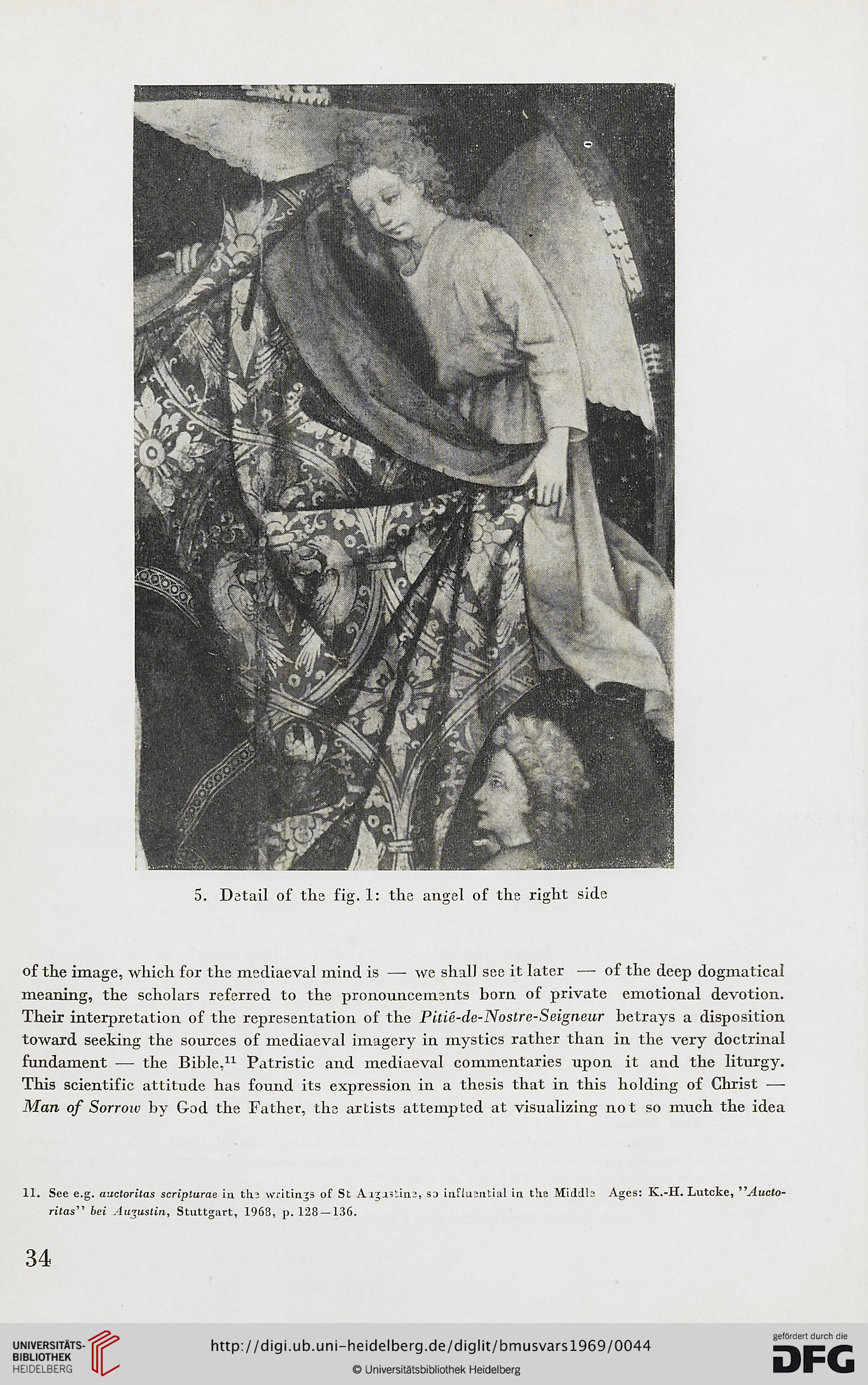5. Detail of the fig. 1: the angel of the right side
of the image, which for the mediaeval mind is — we shall see it later — of the deep dogmatical
meaning, the scholars referred to the pronouncements born of private emotional devotion.
Their interpretation of the representation of the Pitie-de-Nostre-Seigneur betrays a disposition
toward seeking the sources of mediaeval imagery in mystics rather than in the very doctrinal
fundament — the Bibie,11 Patristic and mediaeval commentaries upon it and the liturgy.
This scientific attitude has found its expression in a thesis that in this holding of Christ —
Man of Sorrow by God the Father, the artists attempted at visualizing not so much the idea
II. See e.g. auctoritas scrLplurae in thi writin^s of St Alg.l3tin3, sa infiuenUal in the Middb Ages: K.-H. Lutcke, "Aucto-
ritas" bei Au^ustin, Stuttgart, 1968, p. 128 —136.
34
of the image, which for the mediaeval mind is — we shall see it later — of the deep dogmatical
meaning, the scholars referred to the pronouncements born of private emotional devotion.
Their interpretation of the representation of the Pitie-de-Nostre-Seigneur betrays a disposition
toward seeking the sources of mediaeval imagery in mystics rather than in the very doctrinal
fundament — the Bibie,11 Patristic and mediaeval commentaries upon it and the liturgy.
This scientific attitude has found its expression in a thesis that in this holding of Christ —
Man of Sorrow by God the Father, the artists attempted at visualizing not so much the idea
II. See e.g. auctoritas scrLplurae in thi writin^s of St Alg.l3tin3, sa infiuenUal in the Middb Ages: K.-H. Lutcke, "Aucto-
ritas" bei Au^ustin, Stuttgart, 1968, p. 128 —136.
34




